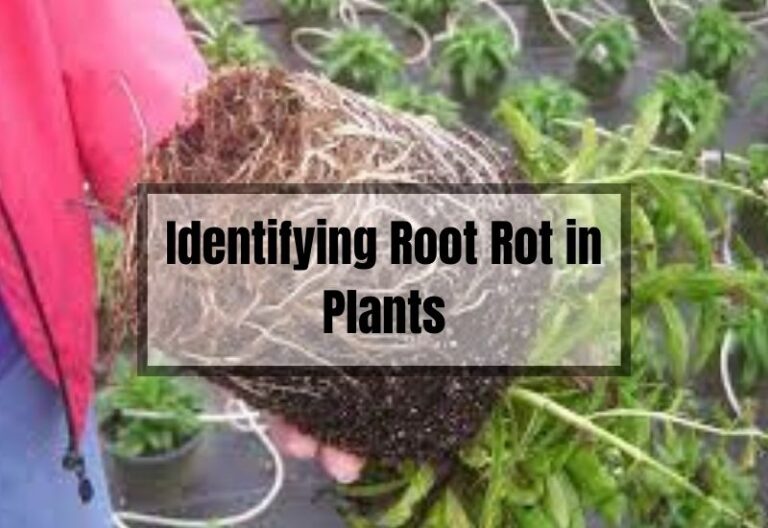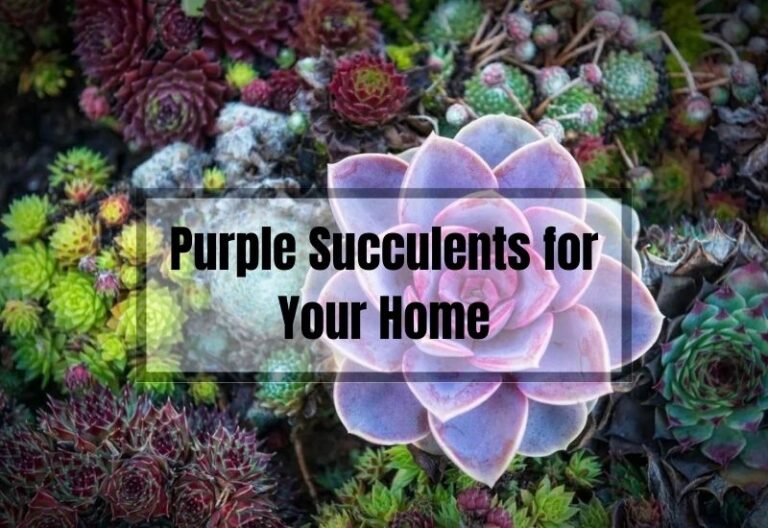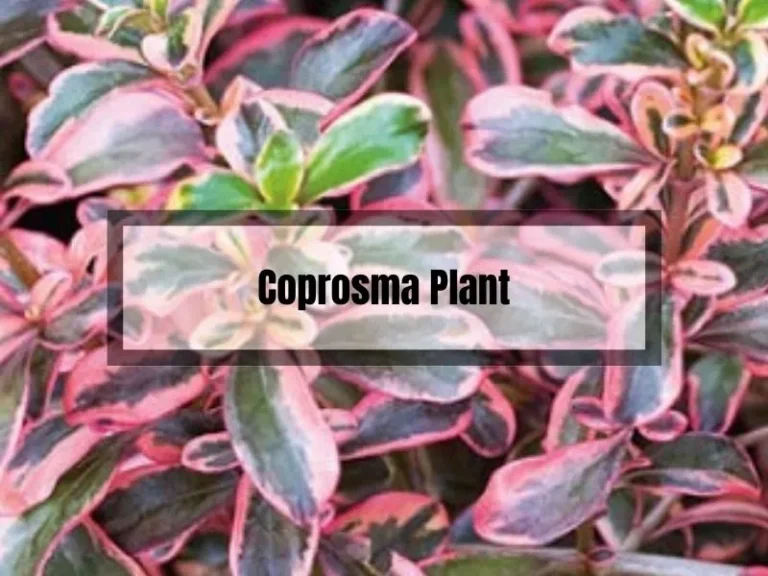Have You Seen These 20 Vibrant Indoor Succulents? Transform Your Space with Color!
From Louise: Passionate about gardening, I specialize in plant care and flower knowledge. I’m here to share my expertise and assist with your gardening queries. Feel free to ask any questions or seek advice on lawn care—I’ll respond within 24 hours!
While succulents are popularly known for their lush green colour, the succulent world offers a much wider colour palette. These colours range from vibrant reds to calming blues to elegant whites. Many of these plants feature accents of various shades and boy, aren’t they beautiful!
Incorporating these succulents into your garden, office, or home space will give them the much-needed pop of colour. Many of these succulents can make a wonderful choice for a gift as well. A major selling point for many people is how effortless they are to take care of!
To save yourself the headache of research, here is our list of 20 Best Colourful Succulents to jazz up any space around you.
Before we go ahead, check out why and how succulents change colour.
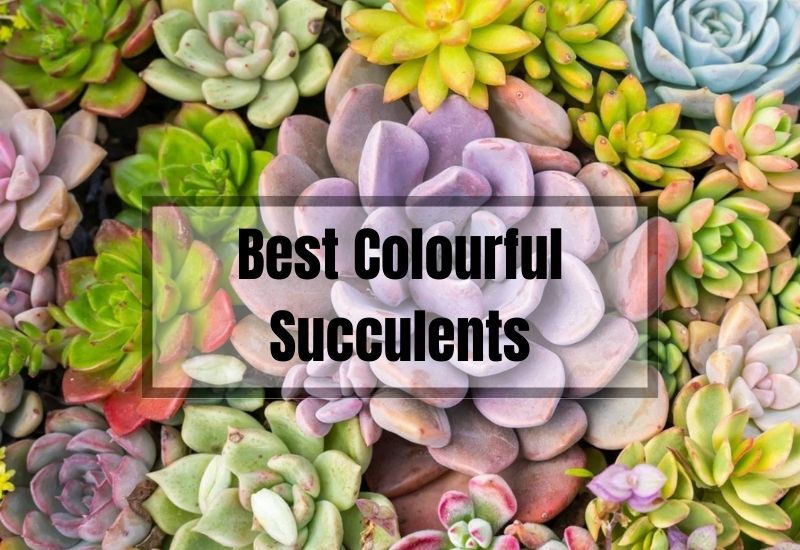
What Are Succulents?
If you’re new to the world of indoor gardening, you may not know what succulents are.
Succulents are a type of plant that store water in their fleshy leaves, stems, or roots. They come in a variety of shapes, sizes, and colors, and are known for their ability to thrive in dry, arid environments.
Why Choose Colourful Succulents?
One of the best things about succulents is their colorful foliage. While many people associate succulents with shades of green, there are actually many species that come in a range of vibrant colors.
Choosing colorful succulents is a great way to add a pop of color to your indoor space, and can help brighten up even the dreariest of days.
20 Best Colourful Succulents
- Blue Chalksticks (Senecio serpens)
- Blue Glow Agave
- Blue Spruce Stonecrop (Sedum reflexum)
- Echeveria ‘Afterglow’
- Echeveria Perle Von Nurnberg
- Purple Heart (Tradescantia pallida)
- Santa Rita Prickly Pear (Opuntia “Santa Rita”)
- Campfire Plant (Crassula capitella)
- Sticks on Fire (Euphorbia tirucalli)
- Sunset jade (Crassula ovata ‘Hummel’s Sunset’)
- Red Salad Bowl (Aeonium urbicum rubrum)
- Lipstick (Echeveria agavoides)
- Desert Cabbage/ Paddle Plant (Kalanchoe luciae)
- Crassula’s ‘Baby’s Necklace’
- Golden-toothed Aloe (Aloe nobilis)
- Echeveria ‘Morning Light’
- Red Edge Echeveria (Echeveria subrigida ‘Fire and Ice’)
- Coppertone Stonecrop (Sedum nussbaumerianum)
- Golden Sedum (Sedum adolphil)
- Golden Barrel Cactus (Echinocactus grusonii)
1. Blue Chalksticks (Senecio serpens)
A great way to wash away your blues is by growing a beautiful blue succulent! If you are looking at something as a groundcover or for small edgings, you have found yourself one of the most eligible candidates! The Senecio serpens or Blue Chalksticks will show you how you can perfectly balance boldness and tranquillity.
This evergreen creeper thrives in warm environmental conditions. Under sufficient sunlight, you will observe the Blue Chalksticks exhibit mesmerizing purple hues. With more sunlight coming its way during the summers, you can also see its pretty white flowers bloom.
Like other blue or purple-leaved succulents, this plant too is a quite volatile indoor plant. Keep in mind that the Blue Chalksticks requires well-drained soil. Overwatering it may cause some serious damage to the plant.
Here are some growing tips for Blue Chalksticks!
2. Agave ‘Blue Glow’
Agave ‘Blue Glow’ is a slow-growing succulent that is generally used as an ornamental plant. It is a hybrid of the succulents Agave attenuate and Agave ocahui. It is available in a wide range of blue shades. You wouldn’t want to miss them magnificently “shine” under the bright sun!
The Blue Glow produces blue-green leaves with red margins and yellow edges. It also features small, soft spines and a sharp terminal red spine. This succulent produces a single, elegant blue-green rosette. If you are going to grow this plant indoors, you may never see it flower. If grown outside, it might produce yellow-green flowers from the basal rosette in ten to fifteen years.
The Agave ‘Blue Glow’ grows up to 2 feet tall and thrives in relatively colder climates. It is the perfect choice for a sophisticated succulent display. They are used to decorate walkways and can also be grown in planters.
Here is a complete guide to caring for your Blue Glow Agave!
3. Blue Spruce Stonecrop (Sedum reflexum)
The Sedum reflexum or Blue Spruce Stonecrop is a blue-green succulent that its name because of its close resemblance to spruce trees. During early summer, it offers clusters of striking, star-like yellow flowers. This combination of colours makes it an attractive option for various containers and walkways.
The Blue Spruce is a fast-growing perennial and is perfect for hiding some empty areas around your garden. It is highly tolerant of droughts. Its blue-green needle-like foliage and radiant flowers will make for a stunning floral display.
This Stonecrop is perfect if you are looking for an enchanting undercover or rock gardens in hot, dry conditions. It is a very low-maintenance plant and a little negligence will not hurt it too much! It thrives in bright sun or even partial shade.
Click here to learn more about growing the Blue Spruce Stonecrop!
4. Echeveria ‘Afterglow’
Moving on to the next colour on our list, we have the Echeveria ‘Afterglow’! The Afterglow offers large rosettes. These rosettes closely resemble roses because of their slender foliage with a subtly ruffled appearance.
This plant is especially and known and widely grown for its stunning foliage. The blue-grey-coloured leaves are flushed with lilac-pink and are a light purple around their edges. They also offer striking orange flowers during the summer season.
This plant is grown in cold climates where outdoor plantation cannot be adapted. When grown outside, you can either expose it fully to the bright sun or keep it in partial shade. However, to exploit its best colour, you should allow it to have maximum exposure to the sun.
You can always remove the flower stems on before blooming if that’s what you prefer. Many people opt to get rid of them and save that energy to focus on the growth of foliage. The Echeveria’ Afterglow’, after significant development, is extremely drought-tolerant. Ensure that you grow it in soil that drains efficiently.
5. Echeveria Perle Von Nurnberg
Now, to the next purple succulent, the Perle Von Nurnberg! It is hard not to be intrigued by the pretty purple colour it acquires when exposed to bright sunlight. As soft as its beauty makes it look, it also is known for its hardiness.
The pastel grey leaves create the most beautiful rosette shapes. They generally grow about 15-20 cm wide. Their red flowers are like the cherry on top on this gorgeous succulent; they are just as appealing to humans as they are to hummingbirds!
This Echeveria enjoys a bright light but will also thrive in partial shade with sufficient sunlight. Please make sure you grow it in soil that drains well for best results.
Here are more Echeveria varieties for you to check out!
6. Purple Heart (Tradescantia Pallida ‘Purpurea’)
Tradescantia Pallida or the Purple Heart is a ground-covering plant. The Purple Heart is also a worthy competitor if you are looking to have an elegant hanging basket display around your home or garden.
These plants feature unique green leaves that are shaped like swords, growing around its stem. The light pink flowers that bloom in the summer are an excellent contrast to the purple-burgundy seen on the leaf margins.
Unfortunately, there is one downside: As hardy as these plants are in hot and arid climates, they have a tough time surviving in the cold. Therefore, if you are looking for a plant for cold weather, you may want to keep looking.
Make sure the spot you choose for your Tradescantia is super sunny, so it does not lose its pretty purple hues. Unlike most succulents on this list, the Purple Heart prefers moist soil over being kept dry. However, be careful not to overwater it and to allow good drainage from the pot.
Check out this guide to growing a Tradescantia Pallida!
If you, too, could not help being enticed by these purple plants, check out our post encompassing 15 Purple Succulents to grow around your home or garden! *insert link*
7. Santa Rita Prickly Pear (Opuntia Santa Rita)
The Opuntia Santa rita or Santa Rita Prickly Pear is a low-growing succulent, whose short trunk grows up to five feet in height. This low-maintenance plant is commonly found in rock gardens, xeriscape gardens and cacti gardens.
It features flat and round pads that visible in red to purple shades. When stressed due to cold temperatures or drought climates, this colour exaggerates. In the summer, you can observe these pads become bluish-grey. The pads also have spines present on them.
This Prickly Pear flowers to give beautiful, vibrant, orangish-red colour towards the end of spring. Once it flowers, it produces a plump purple fruit. It is an excellent container-plant option to add to your succulent display. This succulent gives the pop of colour you need in the winter when the rest of the plants are dormant.
The Santa Rita Prickly Pear thrives best in hot environmental conditions. Make sure you give the soil enough time to dry after watering the succulent. This way, you can ensure that it retains its purple colour.
8. Campfire Plant (Crassula capitella)
This succulent is a bold one. The Crassula capitella or the Campfire plant stands out because of its bright, fiery red leaves once it fully develops. This evergreen plant offers exquisite white flowers during the summers, making them an elegant addition in any succulent display.
The Campfire is the perfect plant for smaller planters to jazz up spaces around your home or garden. It is vibrant succulent, branched with dense foliage that features propeller-like leaves. Its beautiful foliage goes from a lime green shade at the bottom and turns red when it reaches the tips. This succulent also offers a cluster of dainty white flowers on the leaves during the summer.
Campfire plant is fast-growing. Being of the low-maintenance type like most succulents, it does not require much care or attention. The Crassula’s foliage is its distinguishing feature. Putting some extra effort into its care will help enhance its bright colours, especially in the winters. If you like pretty insects, this plant is a great option for you as the Campfire plant is known for attracting butterflies!
Learn how to grow and care for the Crassula Capitella!
9. Sticks on Fire (Euphorbia tirucalli)
Euphorbia tirucalli ‘Sticks on Fire’ can stand out anywhere because of both its colour and height. It is also popularly known as the “Pencil Cactus” These succulents share some features of sea corals. They are the perfect contrast to other plants with more luscious foliage.
Winter is when the red of its thin stems is most vibrant. It develops a yellow colour once the temperatures start to rise. To help it obtain its best shades, expose it to bright sunlight to partial shade and ensure not to overwater it. Keep in mind that the sap of Sticks on Fire is toxic. Hence, take care while managing this plant as the sap can cause severe irritation.
10. Sunset jade (Crassula ovata ‘Hummel’s Sunset’)
The Sunset Jade is a wonderful succulent shrub that is popularly grown as an indoor succulent. Its glossy green leaves with yellow margins are rather interesting to look at they spread around. If you are new to being a succulent parent, the Sunset Jade is a great plant to start with.
Growing up to 3 feet tall, the Crassula ovata will not fail to catch your eye! During the fall, you can see dainty white flowers with lavender hues forming clusters. When it starts to get cold, the centres of its leaves turn golden and develop ochre margins.
Being poisonous is a major downside to this plant. Although it’s not fatal, it can still cause nausea. Hence, we suggest keeping it away from children and animals.
11. Red Salad Bowl (Aeonium urbicum rubrum)
The next gorgeous succulent on this list is the Aeonium urbicum rubrum or the Red Salad Bowl! This succulent is a worthy candidate to decorate in containers. It can make a classy addition to either your garden or home décor!
A fully developed Salad Bowl generally bears about 2-4 large, red-green rosettes with light green leaves. When stressed enough, its lava red leaf tips add to its fiery appearance. Like the rest of the members of its family, the Aeonium urbicum rubrum is monocarpic i.e. the mother plant dies soon after it flowers.
This succulent requires relatively more humidity and shade; other than that, it is extremely low-maintenance. Its dual-colour rosettes make it a charming addition to any succulent display.
12. Lipstick (Echeveria agavoides)
The Echeveria agavoides ‘Lipstick’ is a small, perennial succulent that is hard to miss. With its pointy green leaves lined by bright crimson shades and crisp, fleshy rosettes, it indeed is a treat for the eyes!
During spring, this succulent produces a flowering spike that offers striking red flowers with yellow tips. With an increase in sunlight, its red edges start becoming more noticeable, hence, its nickname ‘Lipstick’. The offsets of this Echeveria sit around the primary rosette that makes it look all the more beautiful!
The Echeveria agavoides ‘Lipstick’ is an excellent choice to decorate in containers. Due to its resemblance to agave, it also makes a great choice to be its alternative if you are looking for a similar-sized succulent.
Head over here to find out more about the Echeveria agavoides!
13. Desert Cabbage/ Paddle Plant (Kalanchoe luciae)
Desert Cabbage is what you need while you are waiting for the chilly months of winter to pass! It is also called Paddle plant or the ‘flapjack’ flat, fleshy rounded leaves, forming a rosette. Its unique pattern and vibrant colours make this succulent truly stand out from the rest.
The prominent leaves of the Desert Cabbage grow about 6 inches in diameter and feature red accents on the exterior. You will also find bright yellow flowers blossom in clusters between late winter and early spring. Under relatively extreme conditions, they start at the tip to gradually turn red. Being monocarpic, it will have fresh offshoots ready for you by the time the primary rosette flowers and dies.
Make sure not to mistake the Kalanchoe luciae with its close relative, Kalanchoe thyrsiflora. Stressing these plants is a great way to differentiate between the two; Kalanchoe luciae turns red while Kalanchoe thyrsiflora becomes a lighter shade of green.
14. Crassula’s ‘Baby’s Necklace’
Here’s another adorable little succulent you can use for home décor: the Crassula ‘Baby’s Necklace! It is a cross between the South African succulents Crassula perforata and Crassula rupestris. The beautiful rounded, fleshy, sage green leaves with striking rose-red margins are how it gets its name Baby’s Necklace!
This gorgeous succulent features puffy foliage on vertical stems. You will find the foliage sprawl and grow on top of one another to form stacks. The pointy, star-shaped leaves exhibit some elaborate details while appearing in spirals around the stems. Their red edges only become deeper with an increase in sunlight.
The Baby’s Necklace is a compact, low-maintenance succulent that is highly drought-tolerant. Like most succulents, you only have to water it when the soil is completely dry. It thrives in bright sunlight. This striking succulent beautifully decorates spaces while growing in containers, pots or hanging baskets.
Find out more about how to grow the Crassula’s ‘Baby’s Necklace’!
15. Golden-toothed Aloe (Aloe nobilis)
This succulent is one that neither hummingbirds nor you would be able to resist! A distinct feature of the Aloe nobilis is its offsets growing to create large colonies; hence, they are an excellent option if you are looking for a ground-covering succulent.
The Golden-toothed Aloe has dark-green fleshy leaves with rose-coloured leaf tips that form eye-catching rosettes. Under enough sun, these leaves may exhibit some gorgeous orange shades. It flowers during the summer to give bright reddish-orange flowers that look striking on its slim stems.
The nectar that its flowers offer is what makes this succulent irresistible to hummingbirds! It also has whitish-yellow prickles turn brighter with increasing sun exposure.
Check out what else there is to know about the Golden-toothed Aloe.
16. Echeveria ‘Morning Light’
Echeveria ‘Morning Light’ is easily one of the most gorgeous of all the Echeverias. The ‘Morning Light’ is a wonderful purplish-blue succulent. Its pink leaf edges
Its tendency to change colours seasonally will keep it interesting throughout the year! It flowers to give vibrant orange-red flowers.
, having pink leaf edges that perfectly compliment it. Large 12-inch rosettes grow on its short stem. The powdery leaves majestically open like those of a lotus or water lily.
Do not be intimidated by the looks of it! The Echeveria ‘Morning Light’ hardly required any special care. For best care, all you need to do is find soil that is slightly more organic than the rest. This succulent thrives in bright, indirect light.
17. Red Edge Echeveria (Echeveria subrigida ‘Fire and Ice’)
The Echeveria subrigida ‘Fire and Ice or the Red Edge Echeveria is a large decorative succulent that grows up to 9 inches tall as it matures. It is well-known for its pretty green leaves with contrasting red edges.
The rosettes of this succulent are close to a foot in diameter, with its tapered leaves overlapping. Its leaves range from blue-green to sea-green shades and its margins from reddish-purple to dark pink.
Between late spring to mid-summer, you will find coral-pink flowers with orange on the inside when it flowers. These flowers also feature red nectarines. You will notice slight translucency of these leaves when they are backlit, its margins glowing a bright neon.
18. Coppertone Stonecrop (Sedum nussbaumerianum)
Sedum nussbaumerianum or the Copperstone Stonecrop is a tough and versatile succulent. It is the perfect succulent it grows both indoors and outdoors. This low growing, perennial shrub is widely used for decoration and grows up to 8 inches tall. It is commonly used for horticulture as a ground-covering plant.
The Copperstone Stonecrop has reddish-brown stems that hold lovely wide rosettes. As the plant matures, these stems spread and spill out of the pot. Its cylindrical leaves acquire a yellow-green colour in partial sun and turn a coppery red colour under bright sun exposure. Each of these leaves measures about 4 cm in length, their leaf tips pointing outwards. The Copperstone Stonecrop flowers to give clusters of small, dainty white flowers. These star-shaped flowers are also fragrant.
The Sedum is a wonderful plant to add to your garden or decorate your windowsills with, especially during summer for their leaves and winters for their flowers. This succulent is popularly known for attracting butterflies. Its brown seeds are an excellent source of food, hence, attracting many birds as well.
This Stonecrop is a plant of preference for many plant enthusiasts because of its striking appearance while being so easy to take care of. It is also extremely highly tolerant of drought and easy to propagate.
19. Golden Sedum (Sedum adolphil)
Sedum adolphil or the Golden Sedum is a hardy succulent that is commonly used for decorations. This creeper grows up to 12 inches tall and thrives outdoors just as well as it does indoors. It comfortably blends into any landscape and can also be individually potted. The Golden Sedum is exactly what you are looking for if you desire a pop of colour in your plant display.
This charming succulent features football-like rosettes formed by dark green leaves. These rosettes appear golden in colour when the tips of the leaves turn an orangish-red under the sun. Each of its thick leaves grows about 1.4 inches long. During spring seasons, it produces elegant cream-coloured, star-shaped flower heads at the tips.
The Golden Sedum is a fast-growing succulent and spreads rapidly in any space. Along with growing up to 12 inches tall, it grows about 24 inches in width. As the rosettes grow older, they shed older leaves and produce new leaves toward the centre.
20. Golden Barrel Cactus (Echinocactus grusonii)
The Golden Barrel Cactus, also known as ‘Mother -in-law’s cushion’. This Mexican succulent looks just as beautiful as it sounds! Its green body surrounded by the golden-yellow spine is hard to miss.
These plants are bought when they are at a decent size. They grow rather slowly but reach a pretty large size once they are fully grown. They can easily be incorporated into your garden’s landscape or around your house in containers. This plant is also incredibly easy to nurture and doesn’t require special care.
Here is another fascinating feature of this succulent: light-coloured hair covers the top of its stem or the crown. The Golden Barrel has gained popularity for being one of the top choices for home landscaping.
You may want to stay clear of these plants if you have animals or children around because of its spine. These spikes can help increase security around. Unfortunately, the Golden Barrel Cactus is also an endangered species in its native land, Mexico.
Go ahead and find out how to grow a Golden Barrel cactus!
How to Care for Colourful Succulents
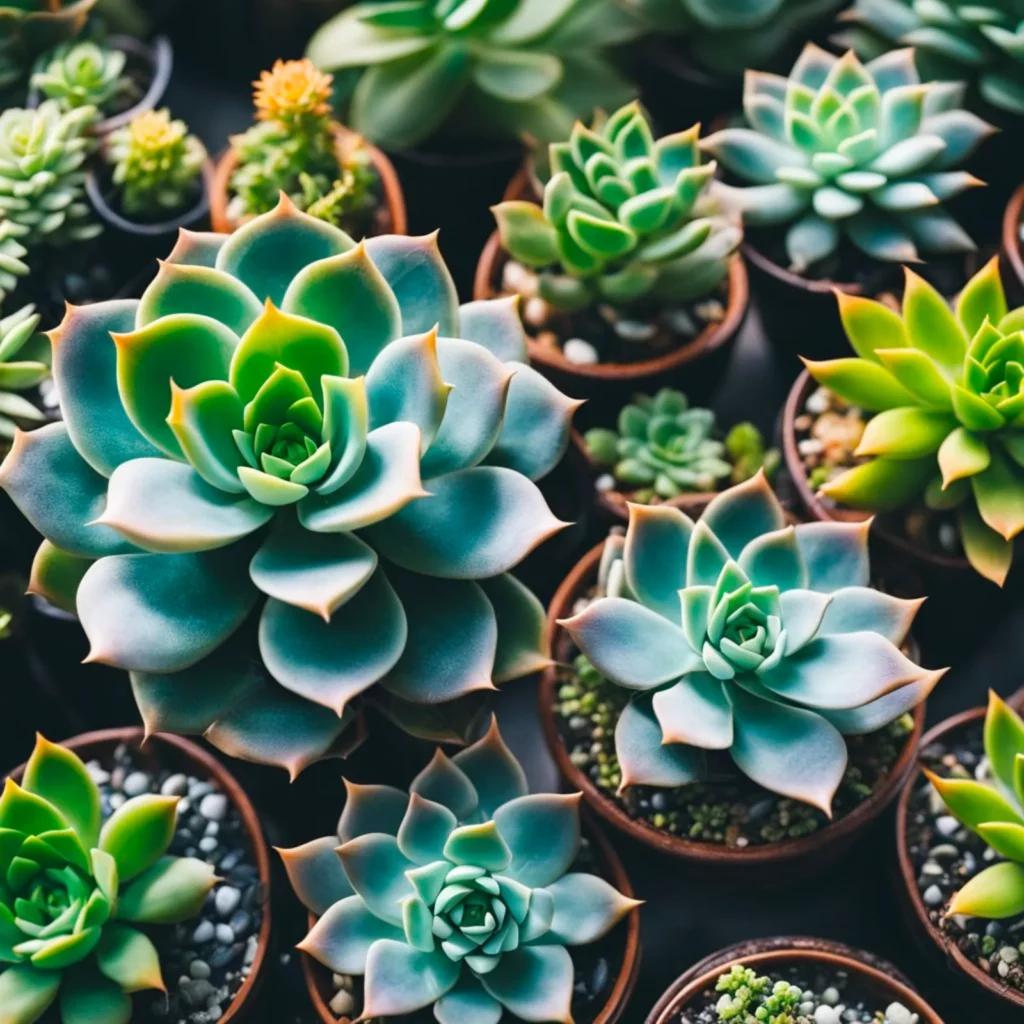
Succulents are some of the most beloved and popular plants around. Not only are they incredibly easy to care for, but they come in a wide variety of shapes, sizes, and colors, making them the perfect addition to any home or garden.
If you’re looking to add some colorful succulents to your collection, it’s important to know how to care for them properly. Here are some tips to help you keep your colorful succulents healthy and thriving:
- Give them plenty of light – Succulents love bright, direct sunlight, so make sure to place them in a spot where they’ll get plenty of sun. If you’re keeping them indoors, place them near a window that gets a lot of light.
- Water them sparingly – Succulents are desert plants and are used to surviving in dry, arid conditions. As a result, they don’t need a lot of water. Water them sparingly, and make sure the soil has completely dried out before watering again.
- Use well-draining soil – Succulents don’t like to sit in water, so make sure to use soil that drains well. You can mix sand or gravel into the soil to improve drainage.
- Keep them warm – Succulents like warm temperatures, so make sure to keep them in a spot that stays above 60 degrees Fahrenheit.
By following these tips, you can help ensure that your colorful succulents stay healthy and vibrant for years to come. With a little bit of care and attention, these beautiful plants will bring joy and color to your home or garden.
Summary
It is surprising how little effort and attention succulents require while still looking as dashing as they do. Colourful succulents are a remarkable way to spread some interesting shades around in your home or garden. There are several combinations of various succulents, there is no way you will ever run out options!
We hope our post enlisting the 20 Best Colourful Succulents has made your research process easier. Remember, you can never go wrong with an exquisite succulent!

